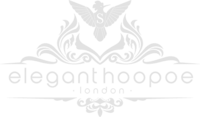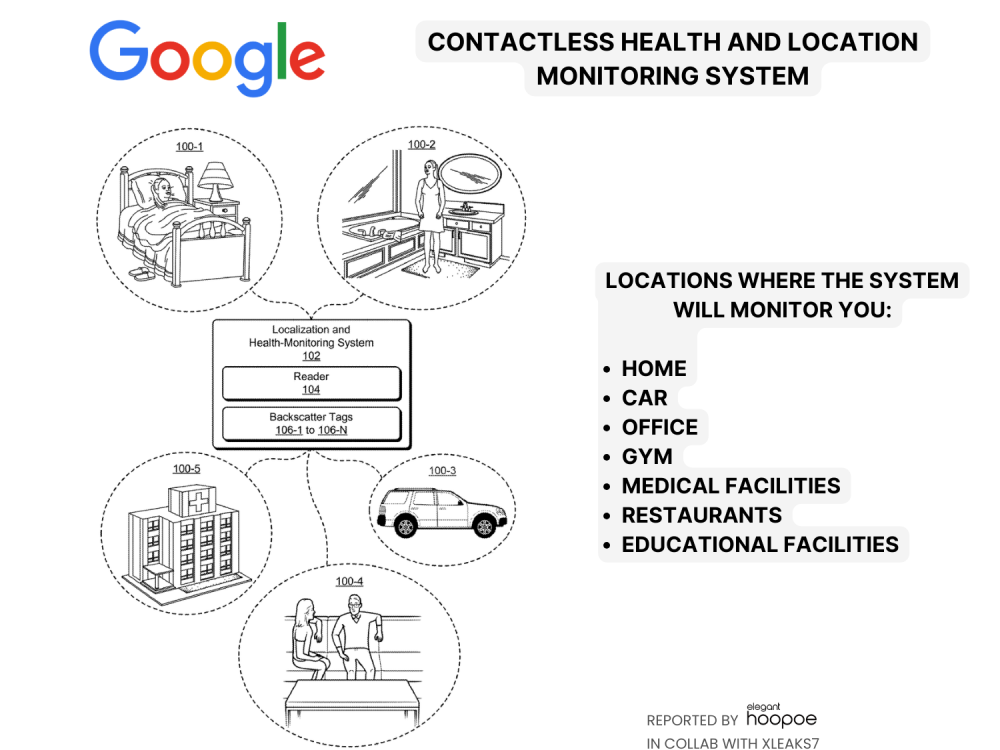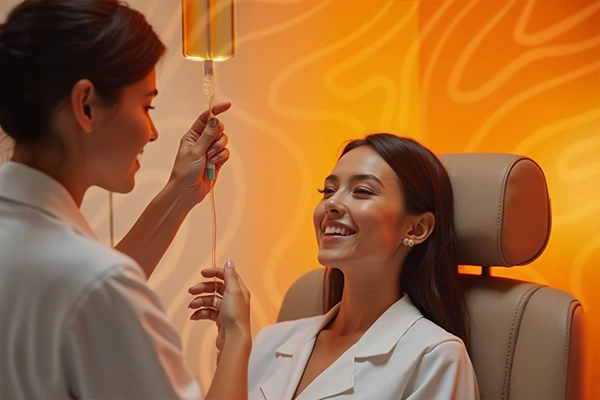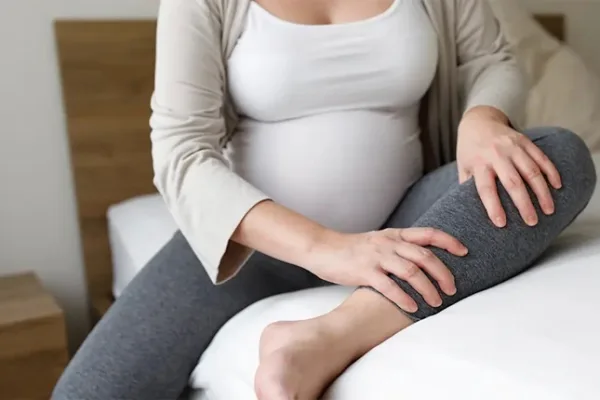How Is Google’s Contactless Health Monitoring Changing the Way We Track Health?
Google’s contactless health monitoring uses radio-frequency signals and backscatter tags to track vital signs like heart rate and breathing—without wearables or skin contact. Key features include:
Non-invasive tech: No skin contact or devices needed
24/7 monitoring: Ideal for home, cars, offices, gyms, schools, and clinics
Low-cost setup: Uses affordable, fixed-position hardware
Health + location tracking: Simultaneously monitors movement and vitals
Emergency alerts: Detects anomalies like sleep apnea or heart issues
This innovation could make health monitoring more accessible, private, and continuous in everyday environments.
These days, continuous health monitoring has become an integral part of our daily lives. Through our collaboration with David from @xleaks7, we’ve obtained evidence that Google is developing a technology capable of monitoring both your location and health without the need for wearables or smartphones. Google’s patent has unveiled insights into their latest system for health and location monitoring, designed to operate in densely populated areas without direct contact with users’ skin. Let’s explore Google’s contactless health monitoring further.

The Problem the Patent is Going to Solve
Traditional health-monitoring devices often require direct contact with the skin, which can be uncomfortable or impossible to monitor 24/7.
This is especially problematic when you’re trying to carry on with your daily activities or if you’re a healthcare professional needing to monitor multiple patients simultaneously.
Additionally, existing systems that offer contactless monitoring tend to be expensive, complex, and challenging to install, making them less accessible to the average user.
Google’s contactless health monitoring patent addresses these issues by offering a simpler, more cost-effective solution that can monitor health and location 24/7 without contact with users’ skin.
How Does Google’s Contactless Health Monitoring Technology Work?
This system uses radio-frequency signals to measure heart rate and vital signs. A device emits these signals, which bounce off fixed backscatter tags strategically placed in the environment. The signals then reflect off a person’s body, capturing tiny movements like chest motions from breathing and heartbeats.
The device, equipped with an antenna, receives these reflected signals. By analyzing the variations in these signals, it can accurately determine the person’s heart rate and breathing rate. Google’s contactless health monitoring technology, using advanced signal processing techniques, offers a non-invasive and effective way to monitor health remotely, making it suitable for diverse applications like home monitoring or medical settings.
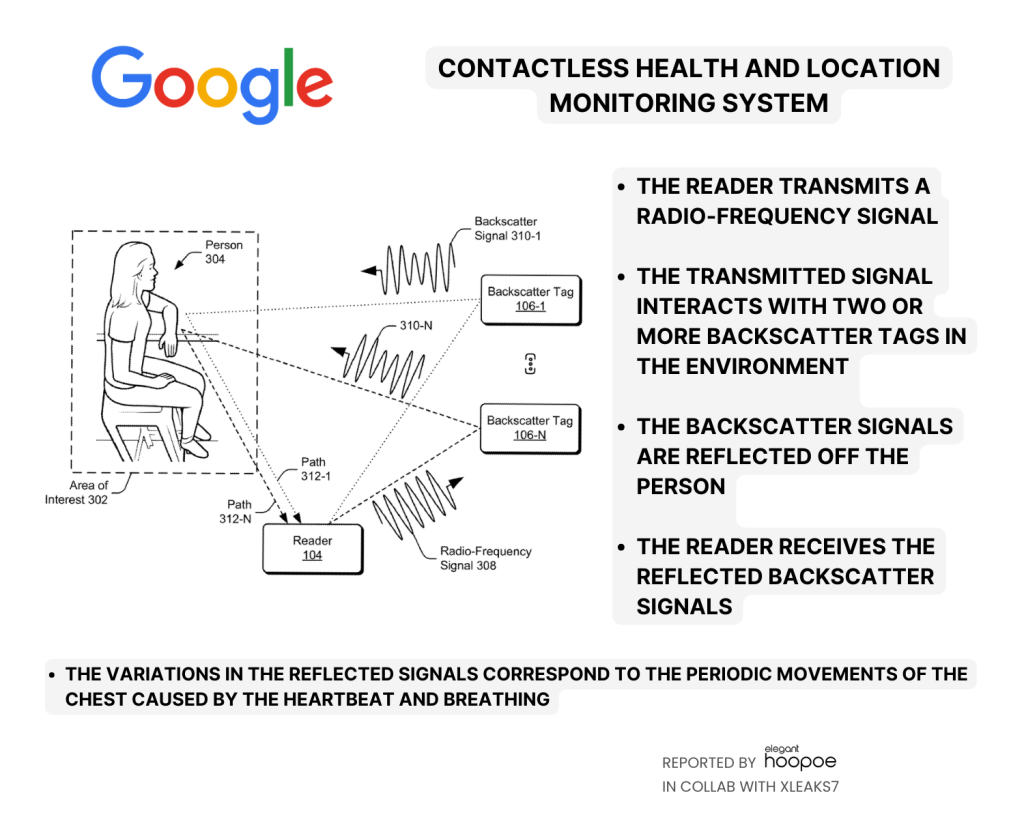
Based on the patent document, the system will monitor your health at these locations:
- Home: To monitor vital signs and sleep quality, and detect occurrences of sleep apnea. Also, potentially detect strokes or heart attacks
- Car: To monitor vital signs of drivers or passengers
- Office: To monitor users while they work in shared work environments
- Gym: To provide vital sign measurements during exercise routines
- Medical facilities: Such as waiting rooms or patient rooms, to detect issues like trouble breathing or abnormal heart rates
- Restaurants: To monitor for situations like allergic reactions or choking incidents
- Educational facilities: To monitor vital signs of students
Google’s Contactless Health Monitoring Technology Highlights
- Fixed Tag Positions: The backscatter tags are placed at fixed locations, which eliminates the need for moving parts. The performance can be enhanced by adding more backscatter tags
- Low-Cost Components: The tags can be made from inexpensive, off-the-shelf hardware
- Health and Localization Data: It can simultaneously determine a person’s location and measure vital signs such as heart rate and breathing rate
- Emergency Alerts: It can alert users or emergency services if it detects anomalies in vital signs
- Area of Interest: The system monitors specific areas like beds, sinks, desks, waiting rooms, or exercise rooms, with the area of interest ranging from 10 to over 20 square meters
- Obstacles: The system is designed to work in various environments, including those with potential obstacles like glass, windows, concrete walls, and metal separators
NOTE TO EDITORS: The text and visuals of this article are the intellectual property of Elegant Hoopoe. If you want to share the content, please give a proper clickable credit. Thanks for understanding.

